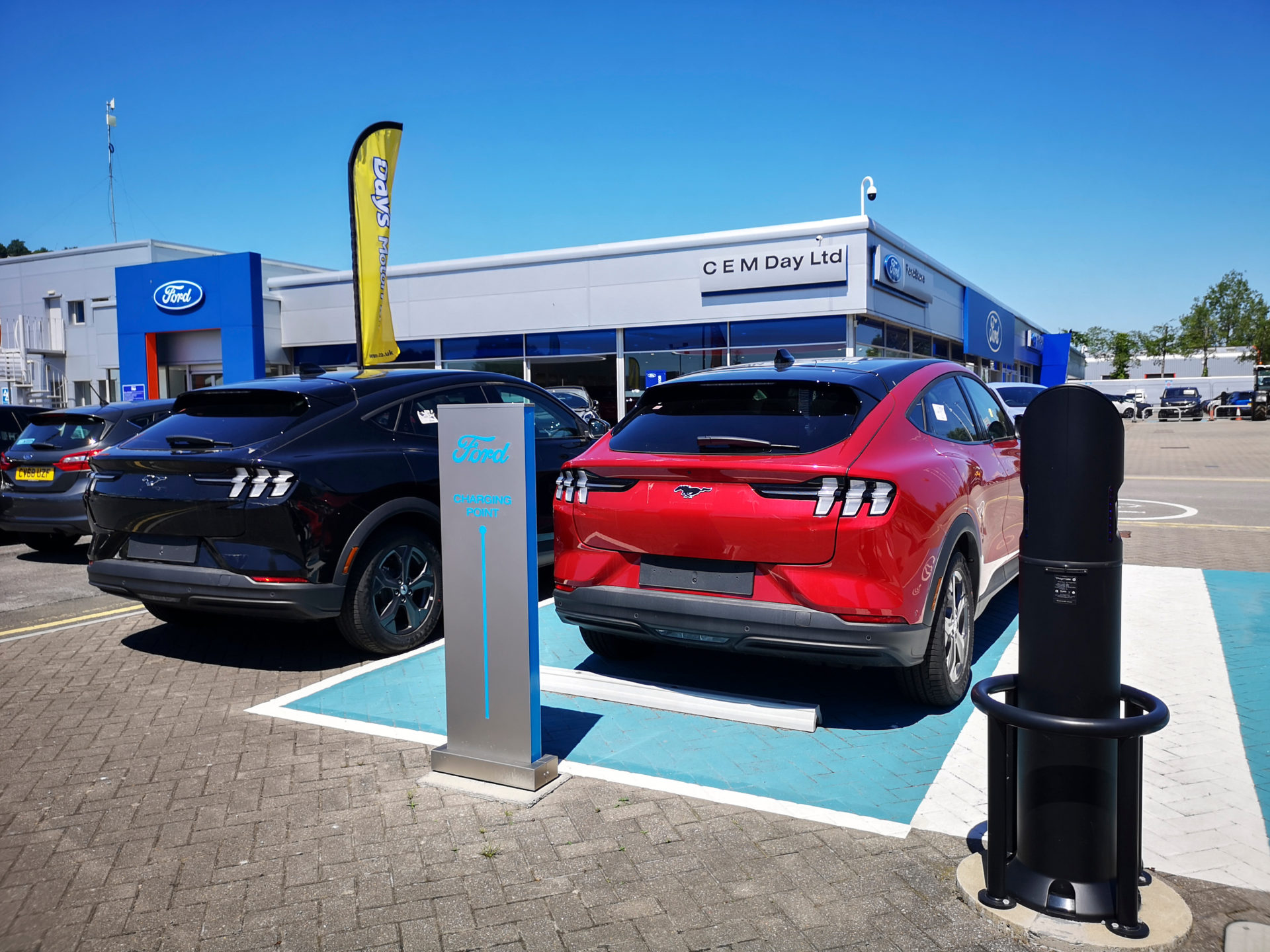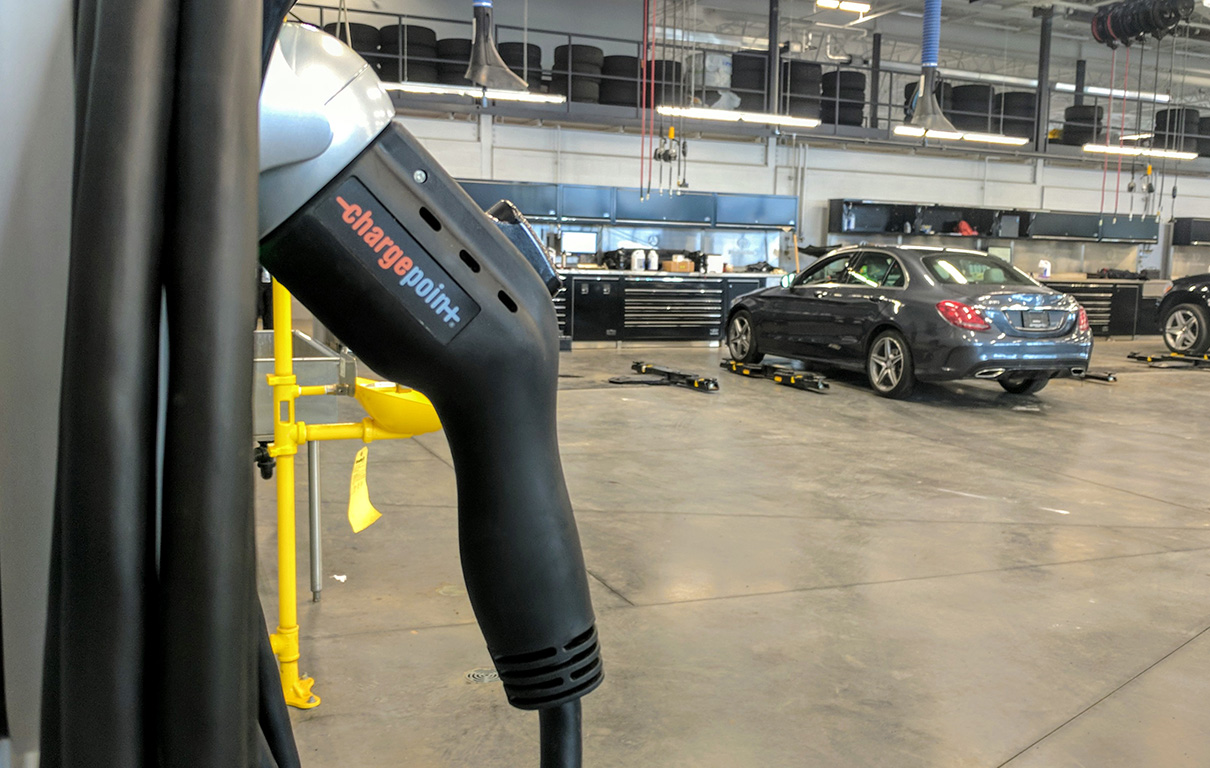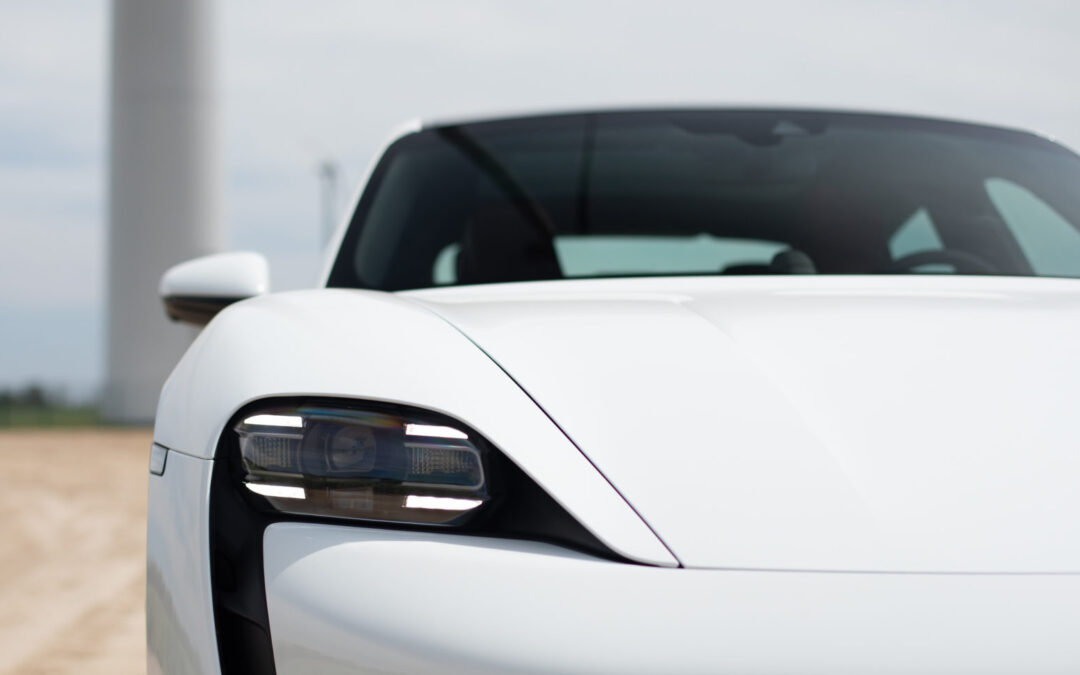The Porsche Taycan is the company’s first pure electric production vehicle. A number of manufacturers have announced plans to move to a completely electric product offering. How will your car dealership adjust to sell and support pure EV?
As a facility owner or manager you’ve likely already asked yourself “How ready is my dealership for the coming wave of Pure EV?” There are many considerations in evaluating the facility for an all-electric product offering from the manufacturer you represent.
Its no secret, the Internal Combustion engine’s days are numbered. While it will take years for car manufacturers to completely break the “IC habit”, it is happening. In some cases it is being forced by government legislation. A handful of countries and even some US states have already put legislation in place banning the sale of IC Engines in the next 10-20 years. This will force all car manufacturers to offer a significant part of their product lineup as pure EV. As a result some manufacturers have already announced they are going all in on pure EV across the board.
Hybrids have been part of the automotive landscape for many years now. Some manufacturers have offered pure EV models, but on a very limited scale. The next 10 to 20 years will see a major wave of pure EVs and hybrids. What does this mean for the retail dealership? It means change is inevitable, and not just to the cars that are sitting on the showroom floor.

Manufacturers are mandating minimum requirements of EV readiness for coming pure EV products. Consider what charging infrastructure the facility will require now and in the future when a significant portion of the product offering will be electric.
Here are some things to consider:
1. How robust is the electrical service?
Consider the electrical service within the facility as well as coming INTO the facility. Is it going to be able to support multiple charging points? These will be required in the showroom, service department, and out on the lot. Not only for customer cars, but for new inventory as well. Don’t just consider EV charging when considering your power requirements. Nick Hall, Fixed Operations Manager – West, at Automotive Development Group says “Electricity is becoming more and more useful in shops RIGHT NOW! Even without EV’s. We have noticed a trend of technicians using less air to operate tools and switching to battery operated tools as they become more powerful and durable.”
Hall continued, “We see many shops today with overbuilt air systems and too few electrical outlets in all the wrong places. In older or poorly planned facilities we are beginning to see expensive renovation projects. Parking lots, sidewalks, landscaping, shop floors, and even show room floors are being torn up. All to bring in new electrical panels, conduit, outlets and other infrastructure to help OEM franchises become “EV certified”.
With so much electrical power that’s going to be required, it’s time to reach out to your local power provider. Have the discussion now about how much power is available to the facility, and if it will require them upgrading their services to you.

Charging support will be required in various locations in both front and back of house. In addition to customer parking, showroom, and service, consider inventory storage areas.
2. How many charging points are you going to need?
ID automotive is currently working with a dealership that is planning for:
- a two-port charging station in their new car delivery area
- a two-port charging station in customer parking
- a two-port charging station alongside the service area for new and customer cars
- a single port charging station in the workshop.
Manufacturers will have a minimum requirement for EV certification, but doing the minimum is just that. Take a more strategic approach and plan for an all-electric vehicle future. You don’t have to invest in all of the equipment you will eventually need right now. You ARE going to have to make infrastructure upgrades. Plan on doing them with an eye to the future and not just the minimum requirement today. This will set the facility up for easier expansion of EV support as it’s required later on. The dealer we’re working with is already talking about the future. They are planning for the addition of a quick charging station in the service drive, and the current project has yet to break ground. That’s good planning. Running conduit to that location now will make it a simple upgrade in the future.
3. What other facility investments beside electrical are going to be required?
There will be other facility considerations in addition to adding charging capabilities and insuring adequate electrical service to the facility. Consider the service department. How well equipped is it to service pure EVs today? Will your current lifts accommodate the additional weight of EVs? Can they accommodate removing EV batteries?

How ready is your workshop for the coming wave of pure EVs? Can your current equipment properly support electric vehicle service requirements? Photo Credit: Virtuoso Energy
Clayton Terry, VP at Dealer Solutions and Design says, “There is a notion of “how often will the battery of an EV really need to be dropped out of the car”? Just recently I was walking through a dealership and they had an EV on the lift preparing to drop the battery out. I asked the manager if there was an issue with the battery. His answer “No issue with the battery, we have to drop the battery out to access another component that is having issues”. The moral of the story, dropping batteries out of these cars isn’t always JUST to work on the battery.
5. How many EV ready bays will I need?
Different states have different EV adoption rates. With car manufacturers increasing EV offerings, having flexible bays that can service either is an important consideration. An initial plan for the service department should consider a minimum of two service bays that are flexible to accommodate IC and EV vehicles. As you continue to ask “How ready is my dealership for the coming wave of Pure EV?” Plan for the future, and consider investing in infrastructure preparation for the whole facility at one time.
Additionally, many OEM’s are beginning to require EV battery rooms or areas to operate on a battery. This equates to more square footage in the building that has the potential to be unproductive space much of the time. Dead space in a shop is wasted money, this can be avoided with thoughtful design of a fixed ops floor plan. Think about how the service department will be able to manage parts inventory for pure EVs.
6. With IC engines being discontinued, what is the plan to replace shrinking IC related service work?
Think of the routine maintenance that the service department sees on a daily basis. How much of that relates to IC driveline repair and maintenance? Certainly this won’t go away overnight, but putting a plan in place to minimize the impact long term is just a good strategy.
Terry from DSD says: “Dealers need to be prepared to capitalize on the wheel service/tire business, definitely for the brands going “all in” on EV. The weight difference for EVs is in the 15% to 20% range depending on the model. Greater vehicle weight has a negative impact on the life of the tire. In addition to weight, EV’s generate more torque than an IC engines which obviously impacts tire wear as well. Thomas Kenny, senior director of research and development for Yokohama Tire Corp., says a 20% loss in treadwear is not uncommon with high-torque electric vehicles. Hunter Engineering’s Quick Check Drive technology is one solution. The system autonomously analyzes the vehicle’s alignment and tread wear as a customer pulls in the service drive, providing opportunities for increased alignment and tire sales.
Hall from ADG says “Embrace It! EV is coming and fuel is going. There is a lot of talk about reduced service and parts incomes because of EV’s. After all, EV’s have about 40% less parts than a tradition internal combustion vehicle and those parts are also more reliable. What we don’t hear a lot about is the opportunity that OEM dealers have in front of them. There is a real chance to get ahead of the EV curve and take back market share from generic service facilities and actually INCREASE your service and parts revenue. This is a rare reset in a landscape where the OEM’s have the chance to really take back control of the Automotive service market.”
Pure EVs are coming. A dealership’s success in the migration to an all EV product line begins now with the simple question “How ready is my dealership for the coming wave of Pure EV?” It continues with thoughtful planning and a well-executed strategy for a facility upgrade. Hiring the right partners to help you navigate your facility’s transition will help minimize issues and get the facility ready for a successful EV future. Click here to start the discussion with us.

